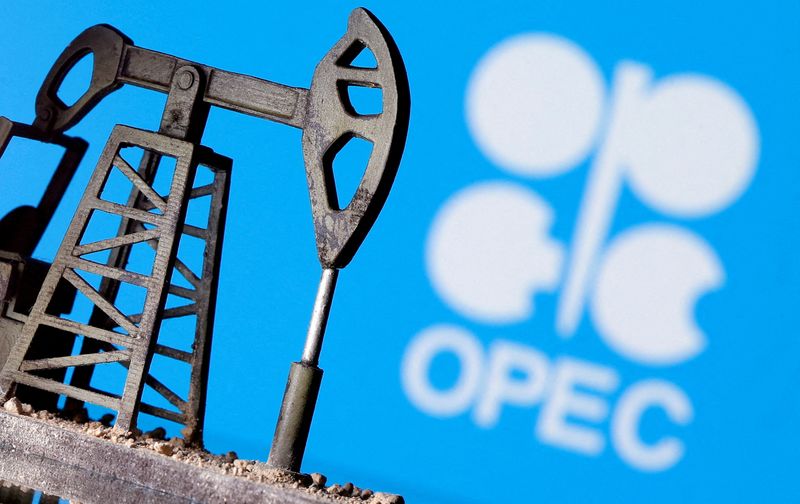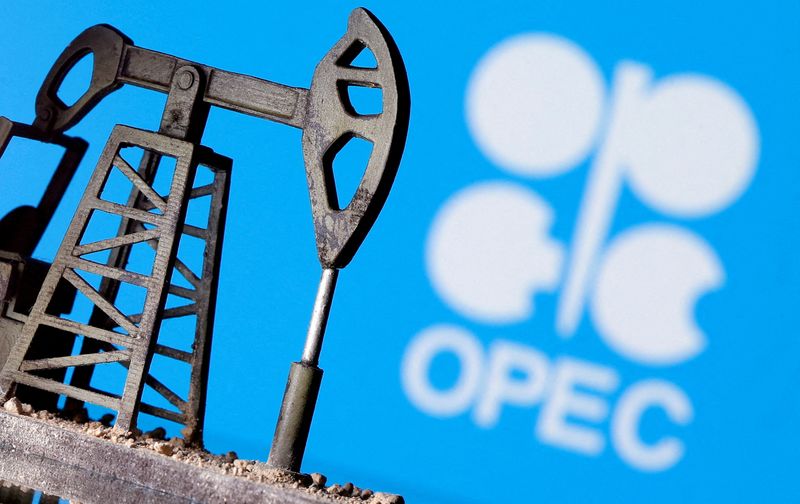Commodities
OPEC cuts 2024, 2025 global oil demand growth view again

By Alex Lawler
LONDON (Reuters) -OPEC on Monday cut its forecast for global oil demand growth in 2024 reflecting data received so far this year and also lowered its projection for next year, marking the producer group’s third consecutive downward revision.
The weaker outlook highlights the dilemma faced by OPEC+, which comprises the Organization of the Petroleum Exporting Countries and allies such as Russia, which is planning to start raising output in December after earlier delaying the hike against a backdrop of falling prices.
On Monday, OPEC in a monthly report said world oil demand will rise by 1.93 million barrels per day (bpd) in 2024, down from growth of 2.03 million bpd it expected last month. Until August, OPEC had kept the forecast unchanged since it was first made in July 2023.
China accounted for the bulk of the 2024 downgrade. OPEC trimmed its Chinese growth forecast to 580,000 bpd from 650,000 bpd. While government stimulus measures will support fourth-quarter demand, oil use is facing headwinds from economic challenges and moves towards cleaner fuels, OPEC said.
“Diesel consumption continued to be subdued by slowing economic activity, mostly a slowdown in building and housing construction, and the substitution of liquefied (LNG) for petroleum diesel fuel in heavy-duty trucks,” OPEC said in reference to August.
Oil held an earlier decline of about 2% after the report was issued, with trading below $78 a barrel.
There is a wide split between forecasters on the strength of demand growth in 2024, partly due to differences over China and over the pace of the world’s switch to cleaner fuels. OPEC is still at the top of industry estimates and has a long way to go to match the International Energy Agency’s far lower view.
OPEC said this year’s demand growth was still above the historical average of 1.4 million bpd seen prior to the COVID-19 pandemic, which caused a plunge in oil use.
For next year, OPEC cut its 2025 global demand growth estimate to 1.64 million bpd from 1.74 million bpd.
LIBYA, IRAQ, RUSSIA CUTS
OPEC+ has implemented a series of output cuts since late 2022 to support the market, most of which are in place until the end of 2025.
The group was due to start unwinding the most recent layer of cuts of 2.2 million bpd from October, but decided to delay the plan for two months after oil prices slumped.
OPEC’s report showed production fell in September due to unrest in Libya and a cut by Iraq. OPEC+ pumped 40.1 million bpd, down 557,000 bpd from August. Iraq pumped 4.11 million bpd, down 155,000 bpd but still above its 4 million bpd quota.
As well as Iraq, OPEC has named Russia and Kazakhstan as among the OPEC+ countries which pumped above quotas.
Russia cut output in September by 28,000 bpd to about 9 million bpd, the report said, citing data from secondary sources such as consultancies. Kazakhstan, however, raised production by 75,000 bpd to 1.55 million bpd.

The OPEC report projects demand for OPEC+ crude, or crude from OPEC plus the allied countries working with it, at 43.7 million bpd in the fourth quarter, in theory allowing it room for higher production.
Other forecasts suggest less room. The IEA, which represents industrialised countries, sees much lower demand growth than OPEC of 900,000 bpd in 2024. The IEA is scheduled to update its figures on Tuesday.
Commodities
Oil prices rise; U.S. crude inventories plunge, Russia-Ukraine truce eyed
Commodities
India’s Reliance to stop buying Venezuelan oil over US tariffs, sources say
Commodities
Oil prices climb on Venezuela supply worries

 Forex3 years ago
Forex3 years agoForex Today: the dollar is gaining strength amid gloomy sentiment at the start of the Fed’s week

 Forex3 years ago
Forex3 years agoUnbiased review of Pocket Option broker

 Forex3 years ago
Forex3 years agoDollar to pound sterling exchange rate today: Pound plummeted to its lowest since 1985

 Forex3 years ago
Forex3 years agoHow is the Australian dollar doing today?

 Cryptocurrency3 years ago
Cryptocurrency3 years agoWhat happened in the crypto market – current events today

 World3 years ago
World3 years agoWhy are modern video games an art form?

 Commodities3 years ago
Commodities3 years agoCopper continues to fall in price on expectations of lower demand in China

 Economy3 years ago
Economy3 years agoCrude oil tankers double in price due to EU anti-Russian sanctions























